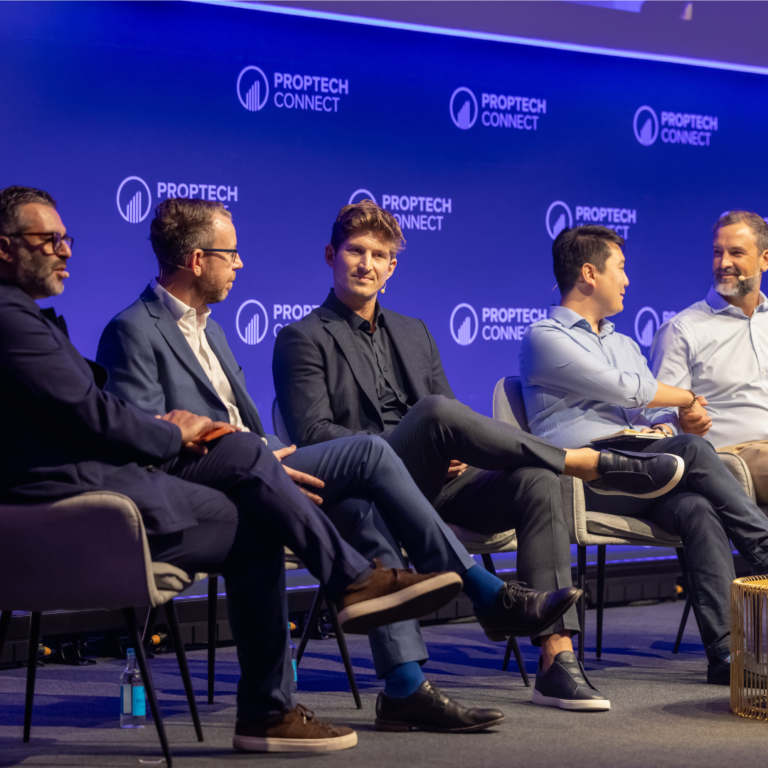
Shared 20 August, 2024
PropTech Connect » News & Insights » News

Optimizing office space requires combining technology, strategic foresight, and ongoing adaptation. By focusing on these three building blocks and ensuring there is data available to make informed decisions, workplace managers can ensure that office environments are optimized, efficient, and where employees want to be.
Because real estate is so expensive and occupancy levels are lower than ever, companies are seeking data to validate their investments to ensure they get it right. Businesses that take a data-centric approach to understanding the space they need—be it the number of square feet, workstations, private offices, or meeting rooms—will be much more likely to satisfy the needs of employees while getting a good return on investment from their real estate.
Rethinking How We Use Office Space
Using office space well means more than just filling desks. It’s about using the workspace wisely to boost how well things run, getting the most out of each office, and creating spaces people feel comfortable in and motivated to use. Having a good workplace optimization strategy means using square footage to support teamwork, solo work, and the overreaching company goals.
In today’s modern office layout, you might find flexible open-plan areas with modular furniture, collaborative zones for impromptu meetings, and designated quiet spaces for focused work. This dynamic setup caters to various work styles, promoting adaptability and efficiency, and draws people to the office. However, designing a layout like this without occupancy data and employee usage patterns can lead to a mismatch between space allocation and actual needs, wasting space and undermining the effectiveness of the workplace.
Sensor Data — Discreet, Affordable, Scalable
This is where sensor data comes into play. Old ways of understanding occupancy, like manual headcounts or IP tracking, are being replaced by more advanced analytics based on Internet of Things (IoT) sensor data. Sensors provide a discreet, affordable, and scalable way to collect the data workplace strategists need to create well-functioning office spaces that are aligned with employee needs and preferences.
The insight that comes from the sensor data allows businesses to easily understand how the workplace is used, highlighting occupancy on a daily, weekly, and monthly basis, enabling the identification of trends and an analysis of how many workstations and meeting rooms are needed to support efficient work and to develop adaptable spaces that reflect the fluid nature of today’s workforce. By combining data from different sources, such as desk occupancy sensors, motion sensors, and network analytics, businesses can get a clear idea of the habits and preferences of employees and use that understanding to make smart decisions about office layout, flexible space, resource management, and cleaning and maintenance.
The Metrics That Matter
1. Desk Occupancy
Monitoring the number of people at workstations helps us understand how many desks and square feet are needed for an efficient office floor.
2. Meeting Room Usage
Understanding which meeting rooms are used when helps to plan for meeting spaces that adequately serve the organization’s collaborative needs.
3. Peak Times Utilization
Knowing how a space is used when occupancy is at its peak helps us plan for the space and resources required during high-usage periods.
4. Spatial Flow
Analyzing movement within the office makes it possible to identify and address congestion for better space planning.
Space Optimization Strategy
Businesses can use the data collected to enhance the layout and organization of their office space in several ways. For instance, by monitoring desk occupancy, companies can identify underutilized areas and adjust workstation allocation accordingly, optimizing square footage usage and potentially reducing real estate costs.
Understanding meeting room usage patterns enables strategic planning of collaborative spaces, ensuring meeting rooms are available when needed and eliminating the wasted space of underutilized rooms. Peak times utilization data allows businesses to anticipate high-traffic periods and allocate resources efficiently, such as scheduling cleaning and maintenance tasks during off-peak hours to minimize disruption. By adopting a more flexible design approach based on data, companies can create adaptable workspaces that evolve alongside changing work styles.
Also important is cultivating a data-informed culture within the organization so that everyone understands the role of data in space planning, encouraging the integration of data-driven insights into decision-making processes. These two things support an iterative approach that allows businesses to continuously refine their strategies based on ongoing data analysis and employee feedback, ensuring that office spaces remain optimized and responsive to evolving requirements.
The Data-Driven Path Ahead
The significance of occupancy in workplace strategy will only grow. Armed with sensor data, workplace strategists can make data-driven decisions to optimize office spaces and meet the evolving needs of employees while minimizing real estate costs. Through continuous analysis and adaptation based on occupancy metrics and usage patterns, businesses can create dynamic, efficient work environments, ensuring long-term success in navigating the continually changing needs of the modern-day workplace.
About Disruptive Technologies
Disruptive Technologies is the developer of the world’s smallest wireless sensors and an award-winning innovator in the IoT market. Disruptive Technologies offers businesses an easy way to collect data from buildings, facilities, and assets. The easy-to-use, affordable, plug-and-play sensors can be deployed anywhere in minutes and offer up to 15 years of battery life. Together with partners, they collect millions of data points and provide actionable insights for a proactive approach to facilities management.
Join our community of 200,000+ real estate leaders and get weekly insights and updates with our newsletter.









*Offer ends on Friday, 7th February.
